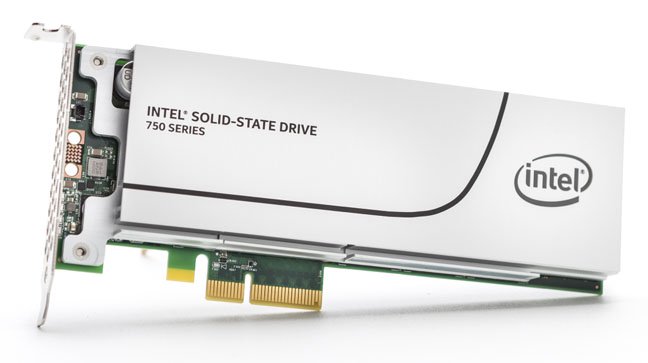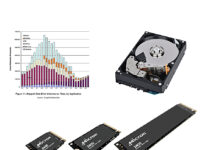Intel may be losing interest in making NAND memory as it sees technology and manufacturing advantages ebb away in a price-slashing, commoditised market.
In an earnings call this week to discuss Intel’s challenging first quarter, 2019 results CEO Bob Swan revealed the evaluation criteria that determines which technologies it manufactures or abandons to the commodity makers.
Which brings us to the NAND problem, outlined by CFO George Davis in the call. “Our memory business was down 12% due to continued NAND pricing pressures, offset by NAND data centre and client bit growth,” he said. “Operating income for this group is down driven by NAND ASP deterioration and demand softness, resulting in inventory revaluations.”
He added: “We expect Q2 revenue to be $15.6 billion, down 8% year-over-year. Our data-centric businesses are expected to decline in the high single digits year-over-year as memory pricing declines weigh on our NAND business and DCG customers continue to consume inventory and absorb capacity.”
Analyst Timothy Arcuri asked Swan: “Bob, I wanted to ask you just a question strategically about memory. And I wanted to understand, obviously, you need to make cost point, but relative to NAND, why the need to make NAND on your own? It seems like you could sell the factory and maybe strike some sort of a supply agreement and save a lot of free cash flow, particularly after a quarter rotation can cost you 100 basis points.”
Swan speaks
Swan provided a careful, detailed and lengthy answer, starting with: “Yes. First, maybe just some context on when we talk about expanded TAM (total addressable market) – maybe the [three] criteria we think about and then I’ll try to apply them to where we are in memory.”
“First, we look for technology inflections where we think we have a real advantage, whether it’s process manufacturing or performance-oriented design that is worth pursuing… number two, such that we can play a more important role in the success of our customers; and third, in an area where we think we can get attractive returns for our investors.
“So those are the three criteria that we’re applying, and we’re going to be increasingly disciplined on the third aspect of those criteria.”
Optane, good. NAND? less so
Intel has two memory products: Optane (3D XPoint) and NAND.
Swan said Optane is strategic and fulfils all three criteria: “As it relates to memory, we have a high-performance Optane product that we think is really differentiated, coupled with our [Xeon] CPU that can do things best in industry that’s really needed to keep pace with the increased performance of CPU processing. So strategically, we think it’s really important. Technically, we think we have a real advantage. And third, we think we can get good returns.”
But NAND is a different matter: “As it relates to NAND, we think we have process technology advantage. We’re in the stage where we’ve gone from 32-layer to 64-layer now.
“The profitability of the NAND business pre this massive decline in ASPs (average selling prices) was okay last year as we were ramping the business. And our challenge going forward is we’re just going to have to execute better on the NAND business, so we can check that third box of attractive returns for our investors.”
And then the kicker: “And I don’t want to — when the market’s plummeting I don’t want to conclude what the right decision is. I want to maybe look through the horizon a little bit to get to the right decision.
“But clearly, we got to generate more attractive returns on the NAND side of the business, and the team is very focused on making that a reality. And to the extent there is a partnership out there that’s going to increase the likelihood and/or accelerate the pace, we’re going to evaluate those partnerships along the way so it can be enhancing to the returns of what we do in the memory space.”
Wells Fargo senior analyst Aaron Rakers thinks Intel’s comments on NAND Flash suggest the company is “definitely evaluating a potential strategic change, including potential supply partnerships.”
IMFT ending
Micron and Intel have a joint manufacturing partnership called IMFT, through which they made 3D NAND and 3D XPoint chips. Intel withdrew from the 3D NAND part of that and is making 3D NAND at a plant in Dalian, China.
Micron is buying out Intel’s part of IMFT.
Although Intel makes 48 and 64-layer 3D NAND the market is moving to 96-layers, with Micron, Samsung, and Western Digital/Toshiba making it already, and SK Hynix headed in this direction.
Intel must invest money in the Dalian fab to transition to 96-layer NAND manufacturing. Bob Swan’s remarks reveal the decision is up in the air.








